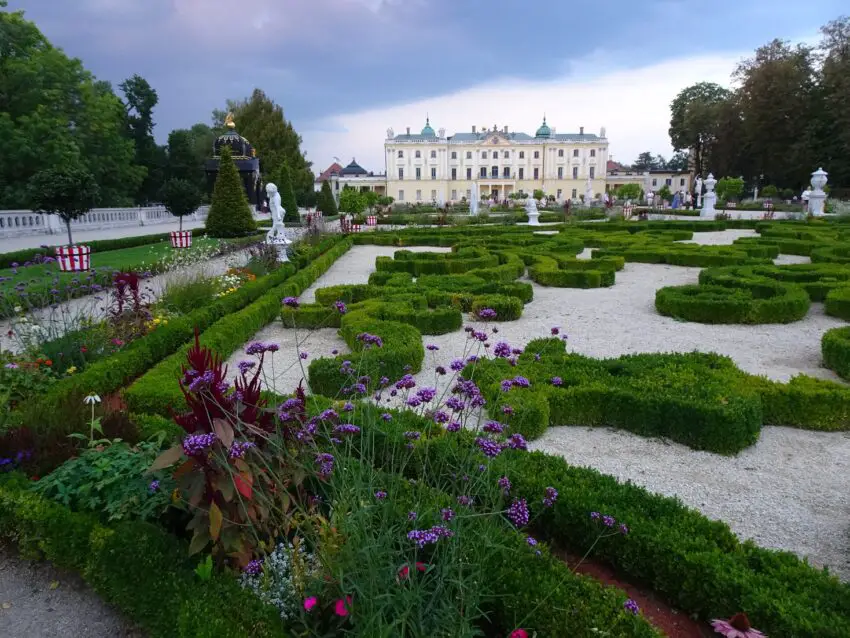Białystok is the capital and biggest city of Poland’s awesome Podlaskie Voivodeship. It makes for a good base for exploring the central part of this beautiful province, and we spent a few days here both at the beginning and end of our trip.
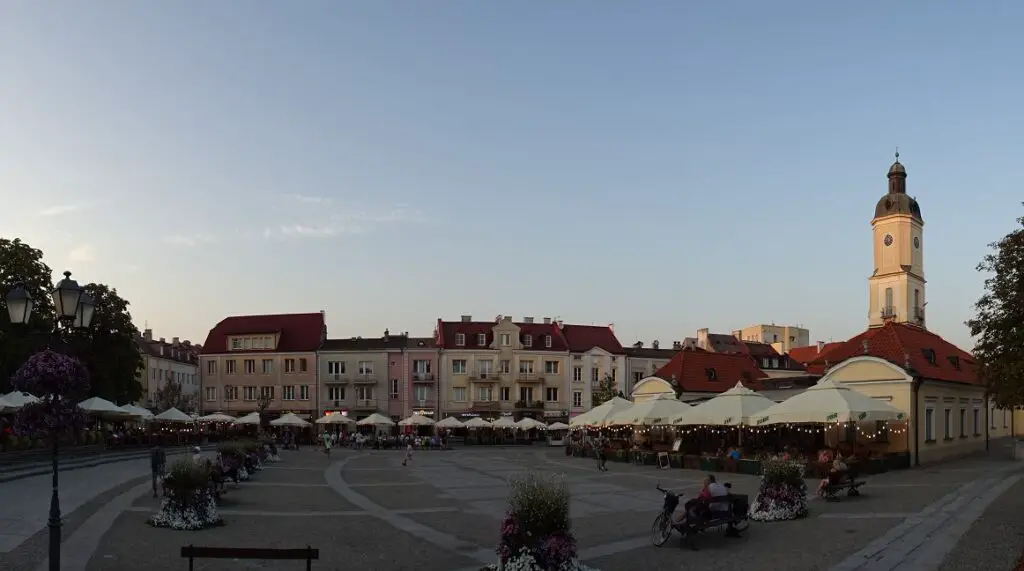
Apart from its central location, the city also has other things going for it. It has a pleasant, laid-back vibe, some pretty architectural gems and lots of interesting museums to keep you occupied for at least one day. Here’s our recommendations of what to see and do in Białystok.
This post may contain affiliate links, and I might earn a small commission at no additional cost to you. For more info, click here.
Guided Tours of Białystok
If you’re especially interested in the Culture of the city or just prefer the company of a knowledgable guide, there are a few private tours available, including a historic walking tour and a regional Beer Tasting Tour. Have a look at some other options below.
A One-Day Itinerary for Białystok
I recommend that you start your explorations of the city at the pretty market square, and afterwards successively work your way east and north-east to some of the more far-flung sights.

Top 3 Places to Stay in Białystok
Budget: Hostel Białystock Centrum
Midrange: Bella Vista Centrum Apartament
Luxury: Hotel Branicki (pictured)
.
Rynek Kościuszki and Art Museum
Białystok’s pretty 15th-century Rynek (main square) is surrounded by some well-preserved historic town houses containing tons of restaurants and cafés. It’s a great place to grab some breakfast before starting exploring the city.
The square is centred on the baroque era Old Town Hall, which nowadays contains the city’s art museum. The collection consists mostly of 19th and early 20th-century paintings by regional artists, and is small enough to be explored in a little under an hour (which is always a bonus in our book).
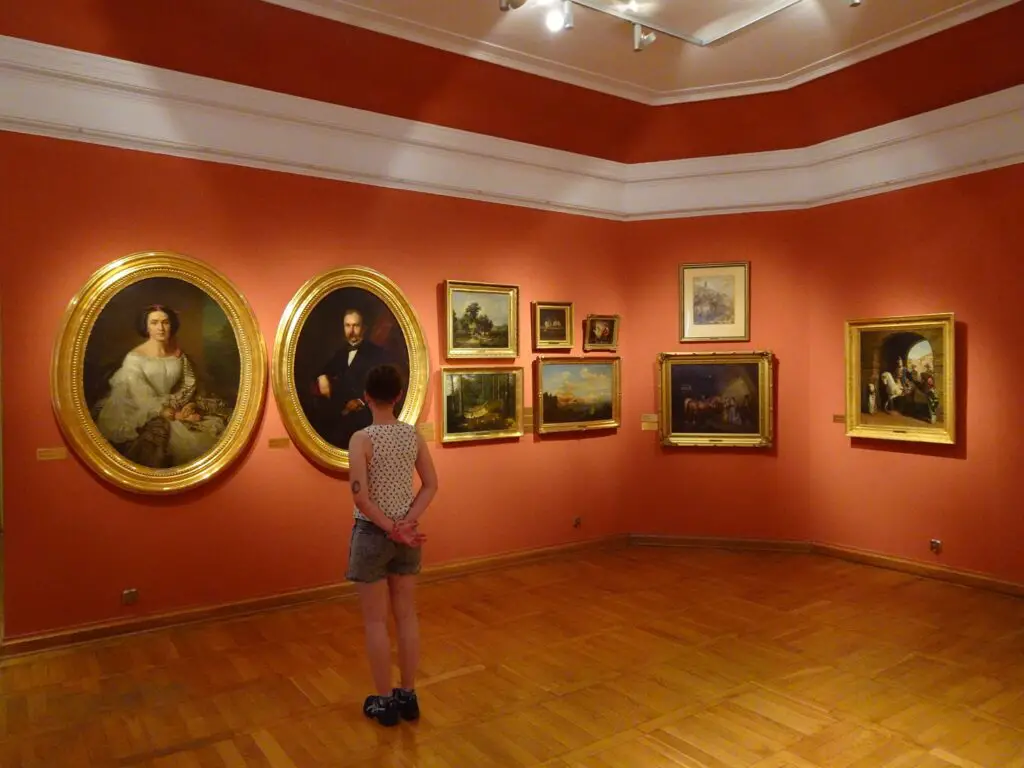
I especially liked the evocative scenes of rural life by Alfred Kowalski, while Stefanie dug the modernist portraits by Jacek Malczewski. We paid 14 złoty each for the museum. You can check the opening times here.
Cathedral of the Assumption
A few hundred meters east of the market square stands Białystok’s towering cathedral. The neo-gothic building doesn’t look too different from tons of other early 20th-century churches in the country, and probably wouldn’t be very remarkable if it weren’t for one small detail.
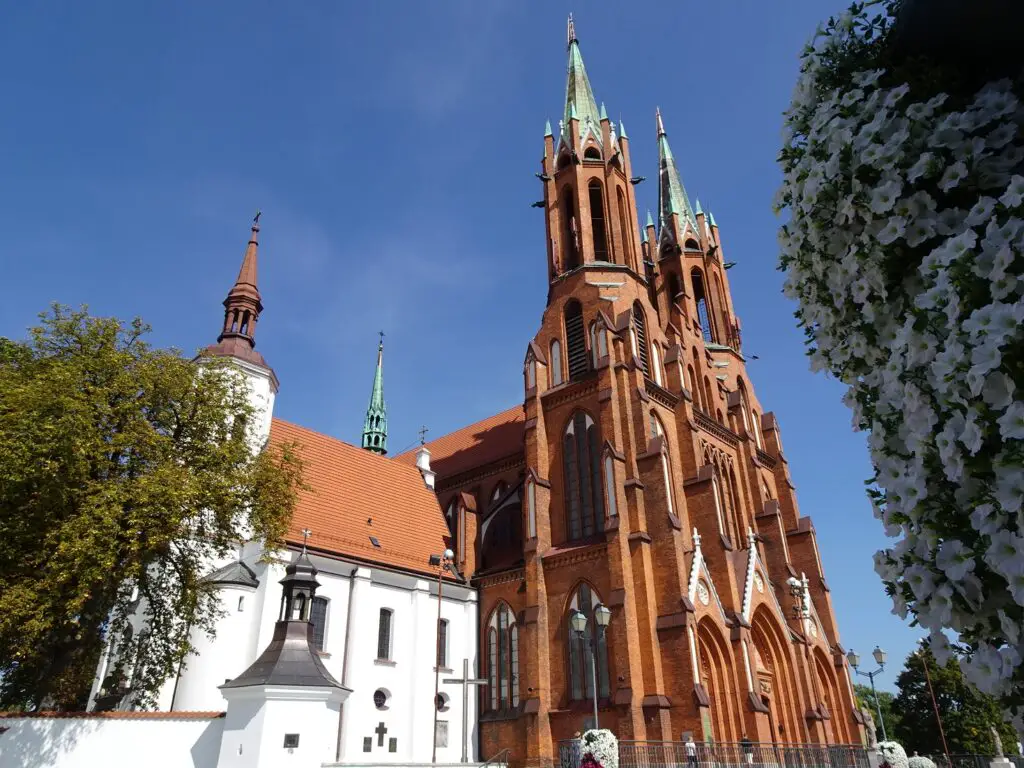
If you check out the western facade, you’ll notice a much smaller 17th-century church connected to the Cathedral wall. Apparently, the Czarist authorities forbade the construction of new Catholic churches, so the building of the Cathedral was framed as an enlargement of the older Parish church.
Unfortunately, the older church was closed, and we could only visit the interior of the Cathedral, but the unusual combination of architectural styles still makes for an interesting sight.
Branicki Palace
In my opinion, this impressive 17th-century palace lying south of the Cathedral is the one must-see sight in the city. It’s also known as the ‘Versailles of Poland’ and while this might be a slight overstatement, it’s a beautiful building nonetheless.
You can visit the interior by taking a guided tour, which takes place a few times a day, and also includes the medieval cellars and the museum of pharmacy. You can find more information about these tours here.
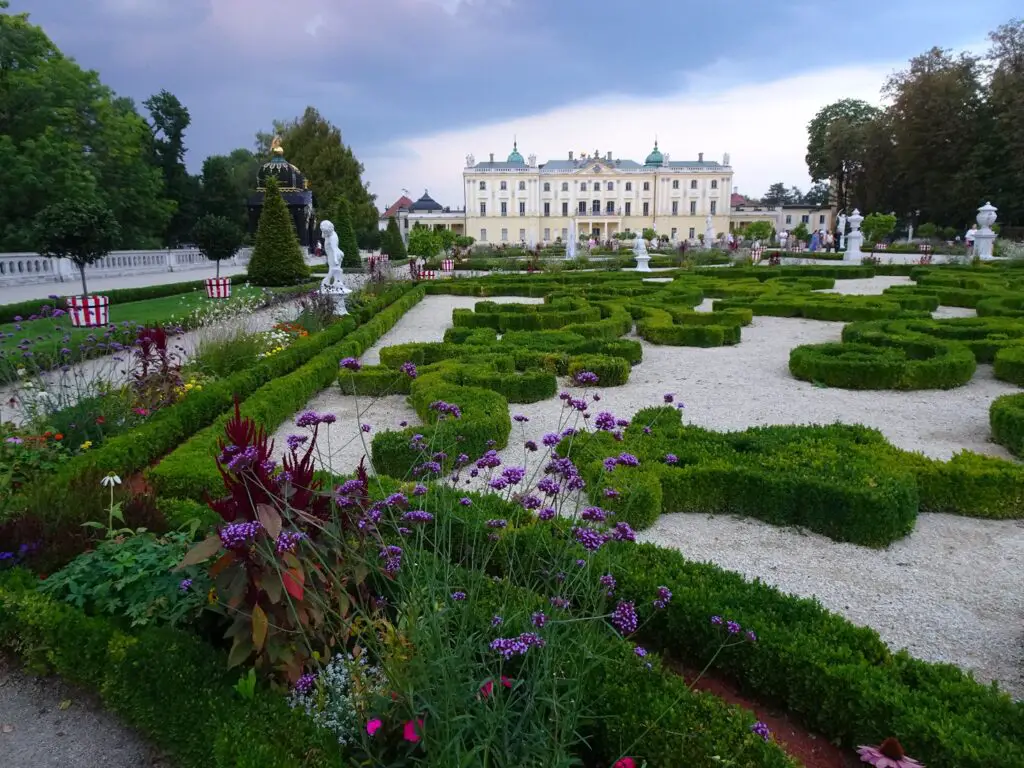
We found the tour interesting, but the inside of the palace doesn’t quite life up to the exterior, as it’s used by the university nowadays and the rooms have been converted to offices and the like. The most interesting room is the former ballroom, which is now used as an assembly hall.
If your time is limited, I recommend skipping the tour and spending some time in the pretty palace gardens instead. The beautiful landscaped gardens are full of small fountains and statues of Greek deities. Also, make sure to check out the elegant rococo-style main gate east of the palace, which is topped by the golden statue of a griffin.
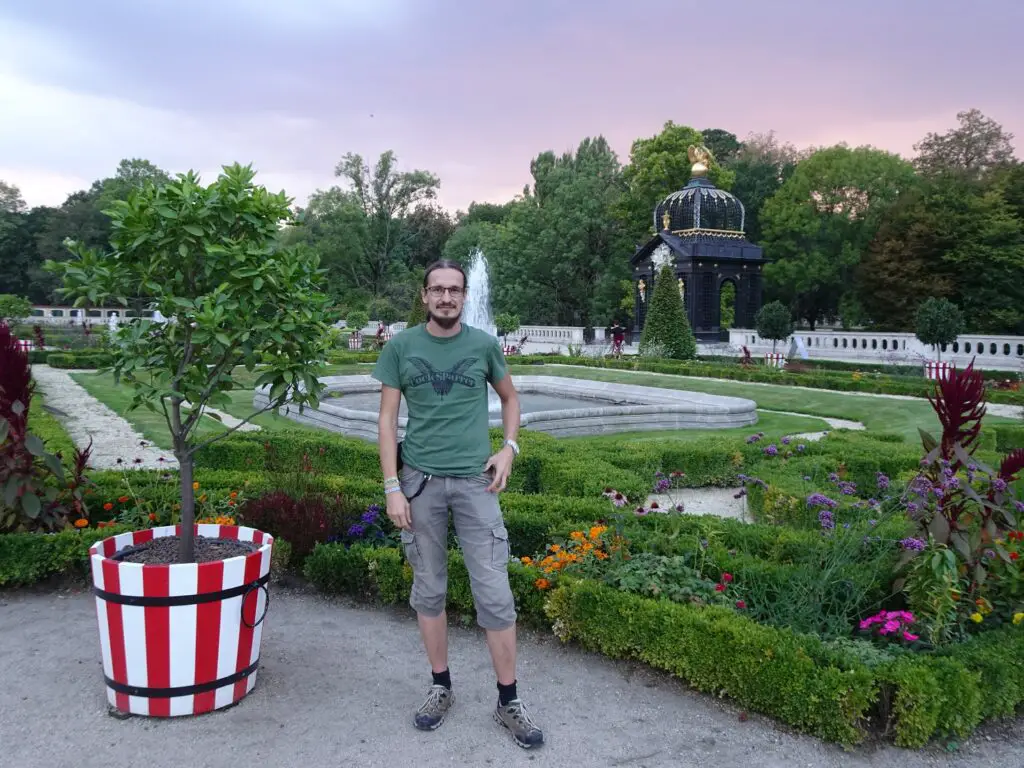
If you walk through it and then turn left, you’ll come across the pretty Branicki Guest Palace from the same era. The adjacent Jana Kilińskiego street has a number of cafés, if you need to fuel up. We recommend the Maison du Café, which has some super tasty cakes.
Ludwig Zamenhof Centre
Białystok is the birthplace of Ludwig Zamenhof, the creator of the Esperanto language, and if you cross the small Biała River and walk a block north-east you’ll come to a museum dedicated to his life and work.
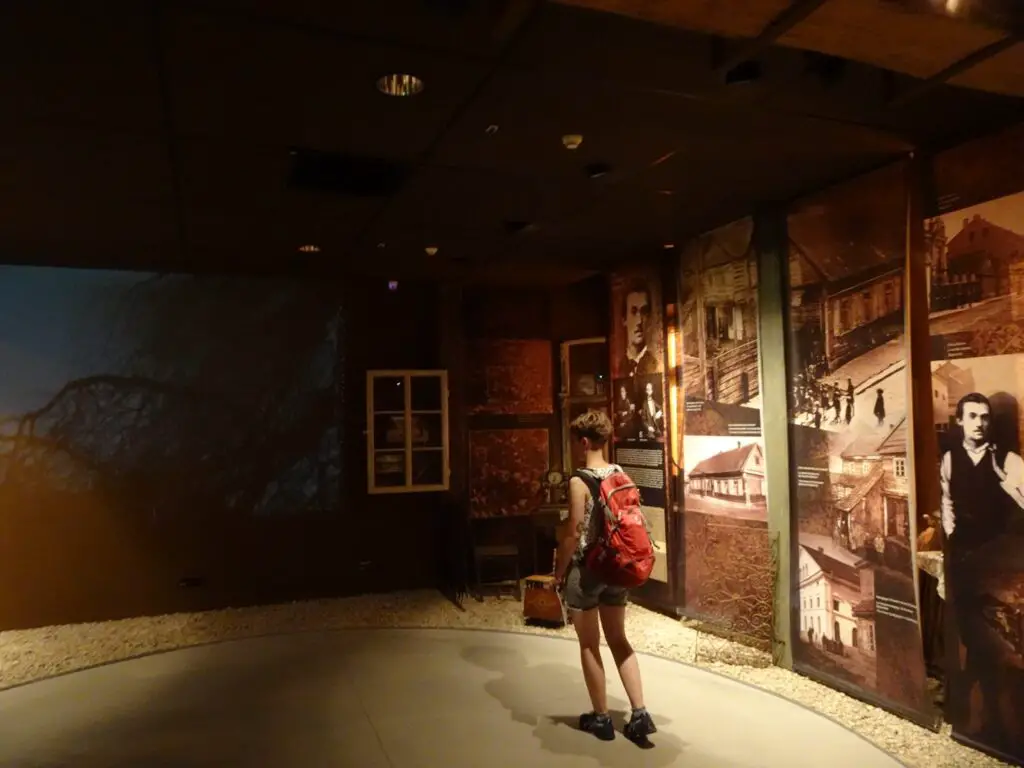
We didn’t know a lot about Esperanto (and even less about Zamenhof) before visiting, but the small museum does a good job of introducing the man and his vision and setting it in the context of the multicultural life in 19th-century Białystok, which inspired Zamenhof to develop the language in the first place.
We visited on a Sunday, when the entrance is free. Otherwise, a ticket is 8 złoty. You can check the current opening times here.
Historical Museum
If you follow Warszawska Street east, you’ll come to another worthwhile museum. The Historical Museum recreates the rooms of a turn-of-the-century town house, complete with period furniture and objects of daily life. We also liked the old-timey photographs, some of which seemed unintentionally funny.

Apart from that, there is also a massive model of historic Białystok at which the city’s urban development is explained via a light-and-sound display. The entrance fee is 14 złoty You can check the opening times here.
Historic Houses in Bojary District
If you’re planning to visit the Sybir Memorial Museum, I recommend walking north through the Bojary District, where a few traditional wooden houses have survived the urban development of the last 100 years.
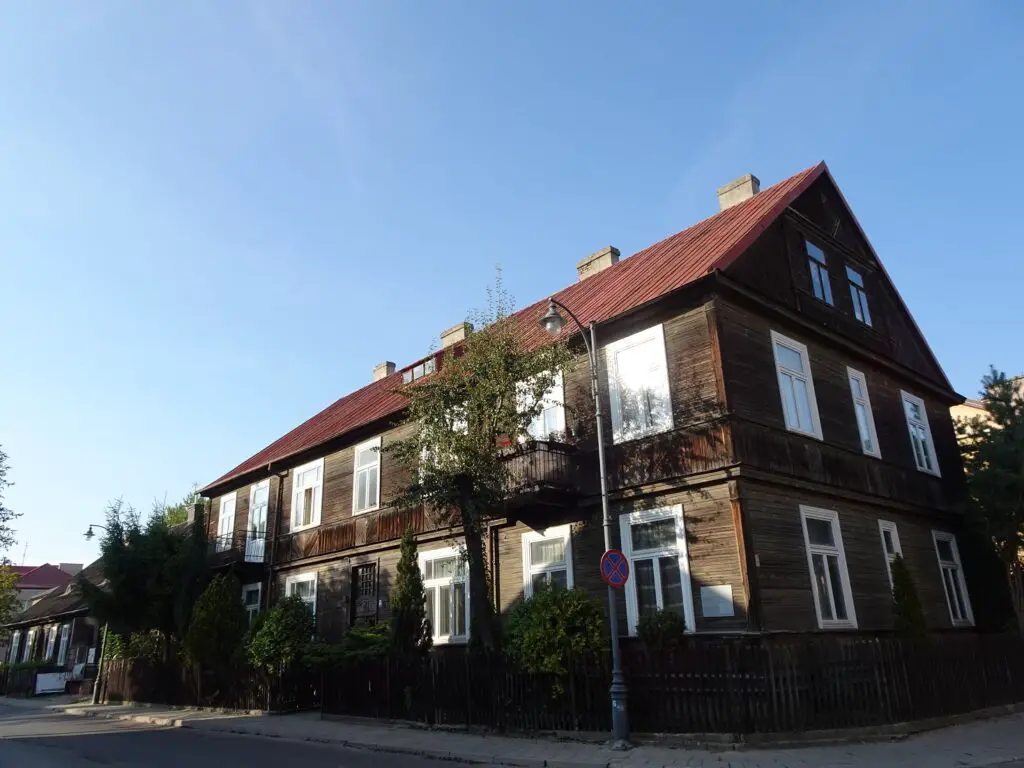
There is a walking trail connecting the most important buildings, but we just checked out a few on our way. The prettiest houses we came across were in Ulica Wiktorii and Ulica Złota.
Sybir Memorial Museum
Of all the museums we visited in Białystok, the Sybir Memorial Museum was by far the most impressive. Dealing with the 19th-century deportations of Polish citizens to Siberia and Kazakhstan, the poignant subject matter is dealt with in a surprisingly effective way.
The museum does an excellent job of conveying the feeling of displacement and isolation through its immersive displays, recreating barracks and schoolrooms and highlighting the fates of particular men, women and children.
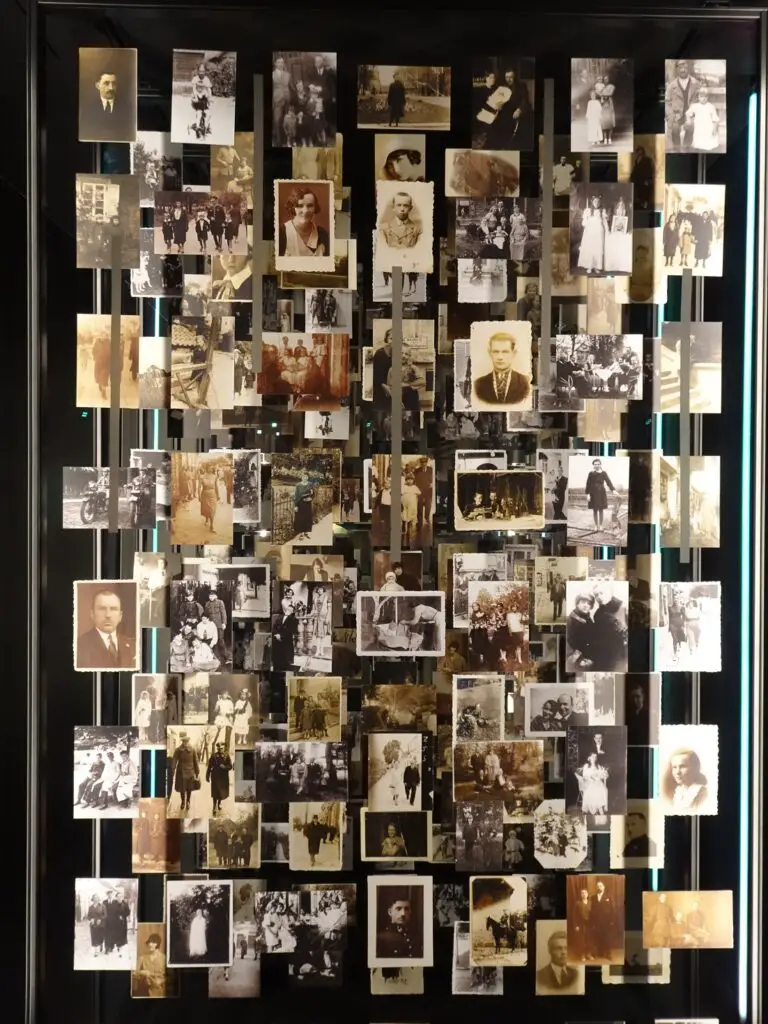
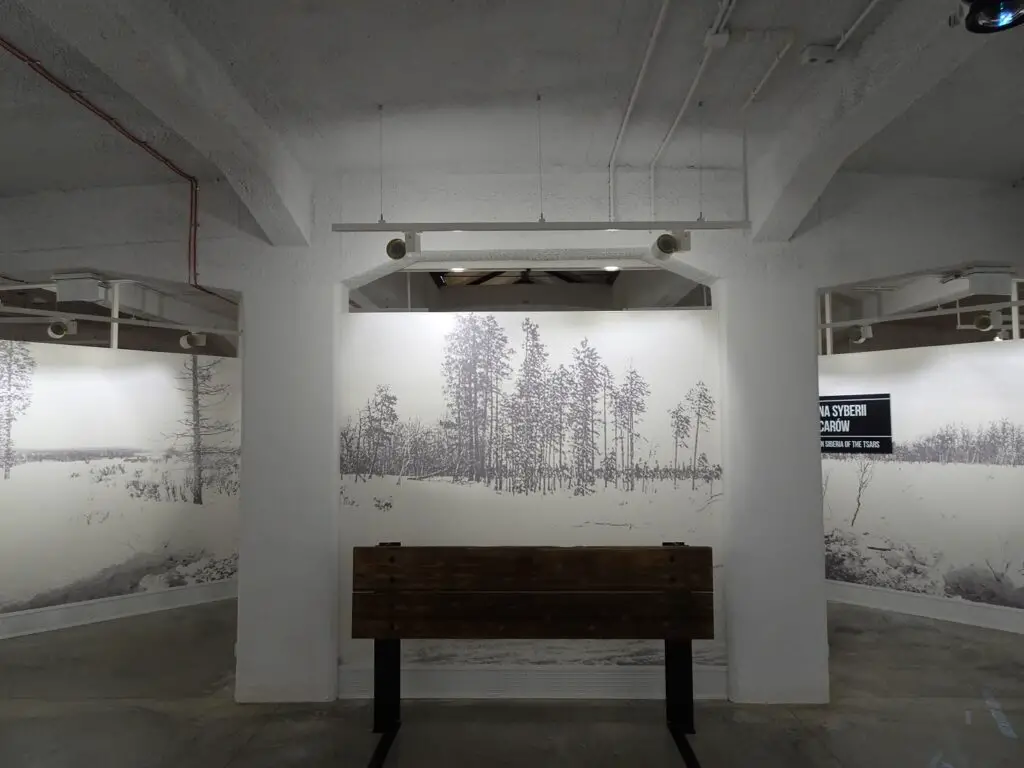
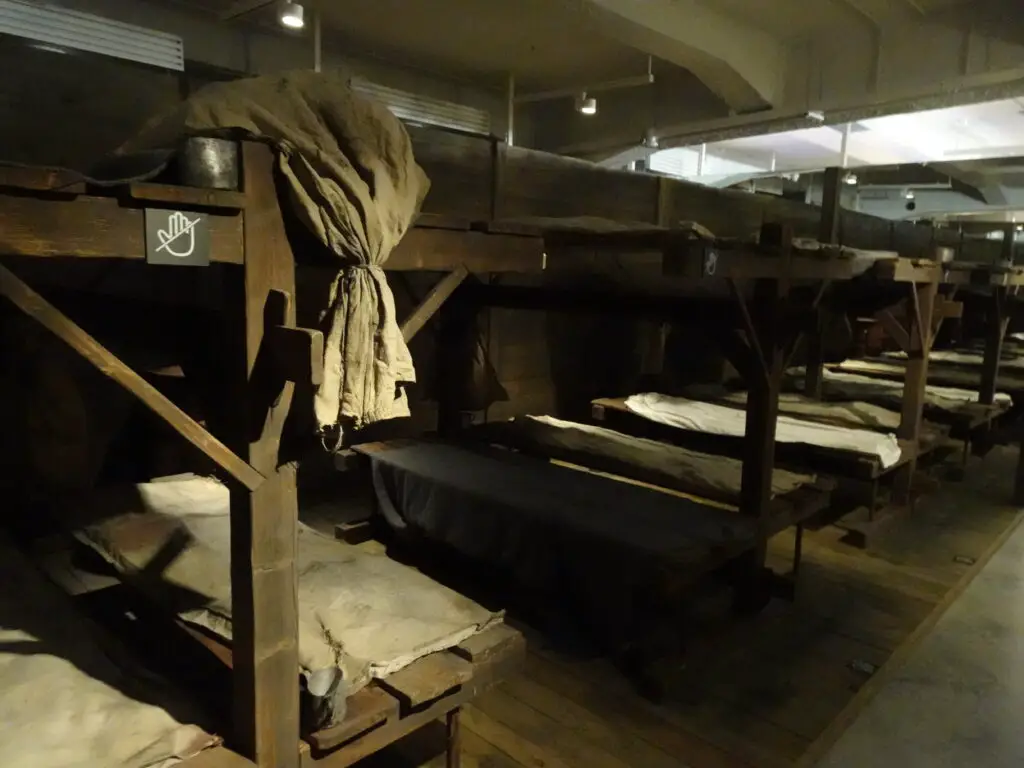
It’s not all depressing, though, and certain sections deal with the development of art, culture and science among the exiled Poles. Also make sure to check out the basement, which holds a solemn memorial to the 1940 Katyn Massacre.
At 25 złoty, the entrance fee is a bit higher than that of the other museums in town, but in our opinion it’s well worth the price. Make sure to bring enough time – we spent 1.5 hours in the museum. You can check the current opening hours here.
Dinner and Ulica Lipowa
Afterwards, make your way back to the City Centre for some well-deserved dinner. If you’re looking for something affordable and regional, we can recommend Zapiecek-Podlaskie Jadło on the southern side of the Rynek, which serves tasty Pierogi, but there are tons of other options around.
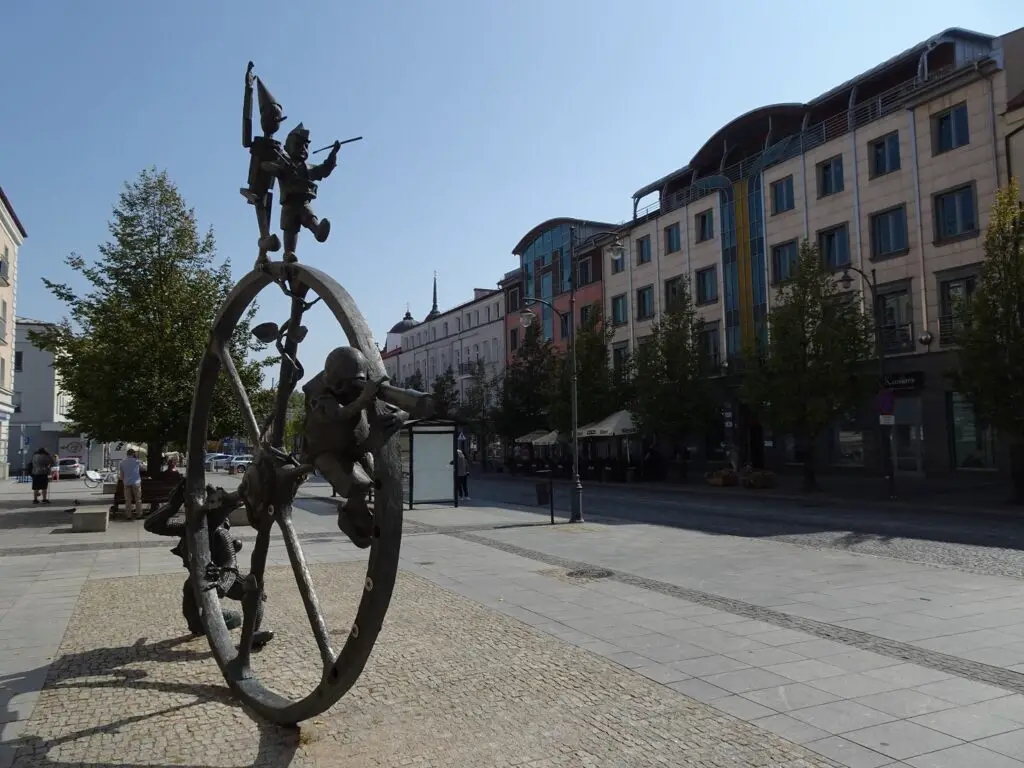
Afterwards, you can end your day of exploring the city by taking a stroll along Ulica Lipowa, the city’s main shopping street. Close to the market square is the impressive Orthodox Cathedral of St. Nicholas. If it’s still open, it’s worth taking a peek inside to see the pretty iconostasis.
Map of Things to Do in Białystok
All the places mentioned in the itinerary can be found in this map of Białystok.
The Best Places to Stay in Białystok
We stayed at the budget Hostel Białystock Centrum, which was simple, but clean. There are also plenty of mid-range options like Bella Vista Centrum Apartament.
If you’re looking for a bit of luxury, Hotel Branicki has very good ratings. You can look for more options in the map below.
See Also
